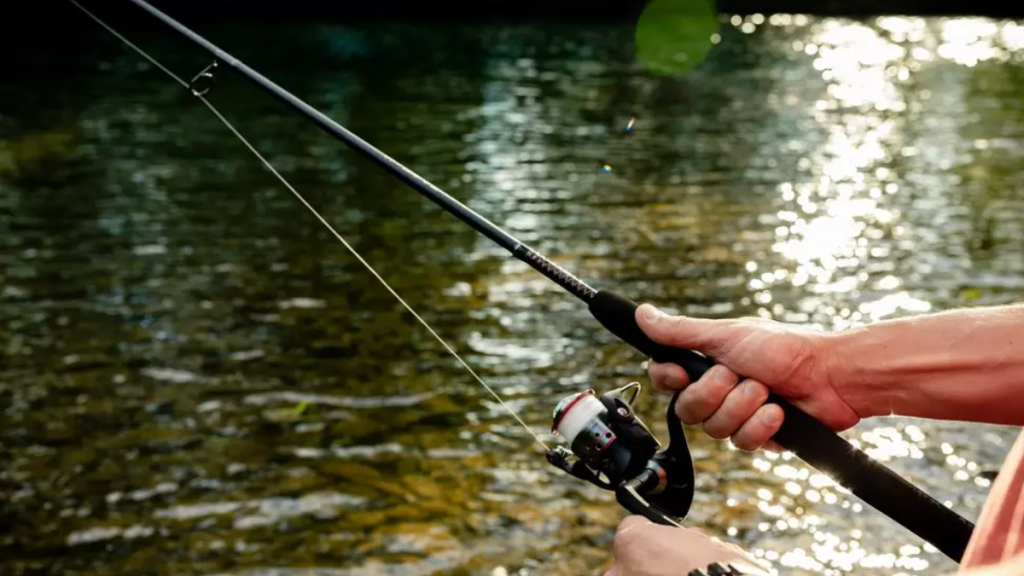Travel Fishing Rod vs Baitcaster Fishing Rods: What Works Best on the Go?

The right fishing rod matters to every angler. Anglers on the move face a dilemma: Should one bring along a baitcasting fishing rod, or does a travel fishing rod suffice? Each type has its advantages, with the best choice depending on your fishing style, target species, or terrain you plan to cover.
This blog looks at each type from a practical and objective point of view to assist office-bound anglers in making an improved choice for their next outing.
The Basics Explained
Travel fishing rods are portable by nature. Usually foldable or multi-piece, they suit a carry-on, a backpack, or a car boot, ideal for anglers who value mobility and simplicity.
By contrast, baitcast fishing rods are well-known for strength and accuracy. Particularly in freshwater or structured environments, where combined with baitcasting reels, they offer better control for heavier lures and larger fish.
Light in Weight and Easy to Pack
Travel rods clearly have the portability and packing advantage. Designed for storage ease and occupying minimal space, these are the rods made for demanding modern-day anglers who like to take their adventures hands-free, be it climbing all the way to a hidden lake or boarding a plane toward the coast.
Most travel rods come in anywhere from three to six pieces, or telescoping designs that collapse to a very small size. They slide smoothly into your luggage without monochrome hassle-these are the travel rods for the travel angler.
Baitcasters-though exuding pure performance-are rarely datatype of compactness. A few baitcasting rods have an option for travel compatibility, but the traditional baitcasters are mostly one- or two-piece rods requiring purpose-built rod tubes or protective gear for transit. If you really would like to be bringing a baitcaster on your trip, then it will be the logistics that get considered first.
Fishing Performance & Control
In fishing performance, baitcaster rods are highly sensitive to casting precision—barely more critical when dealing with bass, pike, or musky. Their capacity to take heavier lines and lures is what makes them preferred by anglers fishing around areas inhibited by structure or vegetation, for which more precise casting is often needed.
Nevertheless, travel rods in recent times have improved significantly in terms of design and strength. A high-quality travel rod now competes on an equal footing with single-piece standard rods, offering good flexibility and strength in both freshwater and saltwater. They’re some degree away from letting you control an extremely precise cast with the baitcasting rod but form one of the best general experiences with travel for casual or intermediate-level fishing.
On-the-move Versatility
Such anglers may never quite be sure what the trip will throw at them in the interchangeability offered by the travel fishing rod. Most travel rods accept both spinning and baitcasting reels for the flexibility to switch setups on the go without the need for two different rods. From jigging in a lake one day to inshore trolling the next, a good travel rod will convert to any fishing environment.
The majority of baitcaster rods are very good for a few techniques but generally are situations. They excel where targeted but might require a more experienced hand and dedicated setup rig. If your trip lands on heavy-cover fishing or purposeful lure placement, then carrying a baitcaster makes more sense.
Skill Level and Learning Curve
Another thing to consider is the ease of use. Generally, travel rods used with spinning reels are easier to manipulate and suitable for almost any user. The forgiveness this offers makes it an ideal situation to go fishing without rigorous arrangements or learning to plan for specific equipment.
In contrast, baitcasters have greater skill demands. It’s more times than not for a beginner to get backlash and adjust fine control settings. While experienced fishermen respect the power and control, the newer people to baitcasting fishing could find it hard to manage, especially when traveling with no time or space for adjustment.
Durability and Maintenance
Durability matters, especially when you’re far from your home base. High-quality travel rods, despite being multi-piece, are built to endure harsh conditions. With graphite or carbon fiber construction, they hold up well during transit and use—especially when stored properly.
Meanwhile, if you measure handcasting ability by drag and power, your bait caster will outperform any travel rod. But because the rod is generally much longer and less compact, during the trip, it can be quite susceptible to damage unless well protected. The reel also needs a wash and grease regularly to avoid having problems, and that is not always convenient on a trip.
Wrapping Up: What Rod Is Going to Win for Travel?
All come down to what you want, but give a quick summary:
Choose a Travel Fishing Rod if:
- You prioritise portability and packability.
- You enjoy a variety of fishing styles in different locations.
- You want a versatile, easy-to-use setup that’s beginner-friendly.
- You value convenience over pinpoint casting control.
Opt for a Baitcaster Fishing Rods if:
- Your trip involves precision casting and targeting larger species.
- You’re an experienced angler comfortable with baitcasting reels.
- You don’t mind the extra gear and care during travel.
- Your destination offers structured fishing spots or heavy cover areas.
After all, the suitable rod for your travels lies mostly in your goals and the fishing technique you employ. Both make a good case for one or the other- so in essence, it’s not about which one to pack.
Whether setting off to some remote riverbank or boarding a plane for one’s fishing coast favorite, having the right gear will make everything smooth, enjoyable, and fruitful.



